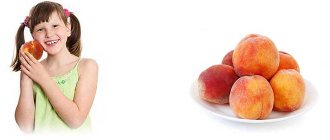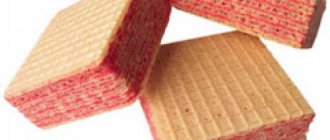Almost everyone likes a common stimulating drink prepared according to one recipe or another. Lovers of the aromatic drink should keep in mind that excessive consumption can lead to excess weight gain. This happens not only because of how many calories there are in coffee, but also due to the presence of elements in it that inhibit digestion.
Coffee is dangerous for excess weight not so much because of its calories as because of some of the elements it contains.
Food ceases to be well absorbed by the digestive system and begins to turn into waste, which can outwardly manifest itself as extra centimeters on the waist.
Specific numbers depend on what recipe a person prefers, what additives and fillers he uses, since coffee in its pure form has negligible nutritional value.
Sugarless
Natural beans contain 331 kcal, natural ground coffee - 180 kcal per 100 g, instant coffee has the least calories - 100 g contains only 118 kcal.
Based on this, the nutritional value of one 100-gram cup of the drink without any additives will range from 2 to 50 kilocalories . If a person drinks 5 – 6 cups a day (coffee without additives), his daily diet will increase by an average of 50 kilocalories, which is not terrible for the figure. But since sugar, cream, etc. are usually added to coffee, the calorie content can increase significantly - up to 250-400 (or even more) kilocalories per day from 5-6 cups, which is already comparable to a large bowl of fatty soup and can be a serious obstacle to losing weight.
Varieties of coffee 3 in 1
The 3 in 1 packaged drink can be divided into several types:
- the ingredients include coffee beans;
- chicory is used instead of natural coffee;
- The main component is barley, chestnuts or acorns.
The products also differ in taste. They may contain a hint of hazelnut, cinnamon, caramel, coconut, etc.
The products are produced by different manufacturers. Among the most popular of them are:
- Jacobs. The brand is extremely popular. Produces good quality instant coffee;
- Nescafe. Arabica beans are used in production. Due to this, the drink is characterized by a pleasant taste and rich aroma;
- MacCoffe. The company gained popularity back in the nineties of the last century;
- G7. It has excellent taste, but due to its high cost it is not in great demand;
- GoldenEagle. The products of this manufacturer were the first to appear on the Russian market. There are several varieties of coffee available, varying in strength.
Calorie content of coffee with additives (sugar, milk, condensed milk, etc.)
Only a few gourmets prefer the sharp bitter taste. The “heaviness” of coffee is enhanced by the addition of fillers that soften the bitterness and make the taste richer. The number of calories in them is as follows:
- 1 tsp. sugar - from 15 to 25 (depending on whether it is unrefined or refined)
- 1 tbsp. l. cream - 40
- 50 ml milk - from 15 to 35 (depending on fat content)
- 1 tsp. cognac - 12.
From the list above you can see how many calories are in coffee with milk.
It is preferable to choose cream - it will not significantly increase the fat content, but will provide more benefits, because it contains healthy fats and substances that maintain the beauty and youth of the skin. Milk removes beneficial natural antioxidants, making them useless.
The combination with condensed milk has a mild, pleasant taste and will be useful for those engaged in intense intellectual activity.
Coffee with condensed milk has more calories than milk
It is occasionally given even to children in small quantities. People for whom it is important to maintain low weight are not recommended to indulge in drinks with condensed milk, since their calorie content reaches 150 kcal in a small cup!
Everything is easy to calculate, especially if you cook it at home yourself. It would be healthier to replace sugar with honey. Although 1 spoon of honey contains 67 kcal, it contains many valuable substances.
calorie content, harm and benefit, types
Today, 3 in 1 coffee is extremely popular. At the same time, few people know what is included in this drink and what effect it has on the body. It is worth understanding what instant food products actually are and whether they can be harmful to health.
What does the drink consist of?
According to manufacturers, this type of coffee contains coffee beans, milk or cream, and sugar. True, the shelf life of natural dairy products is quite short. Therefore, instead of them, vegetable cream is used containing the following components:
- coconut or palm oil;
- glucose syrup;
- acidity regulators;
- milk protein;
- flavor enhancers;
- emulsifiers;
- stabilizers.
The most expensive component is the coffee fruit. Naturally, manufacturers save on them in every possible way and use the cheapest robusta beans. Often they are completely replaced with barley grains, acorns or chicory.
Often, excessive amounts of granulated sugar are added to the bags. Due to this, it is possible to hide the taste of a low-quality product. The drink turns out to be very sweet and cloying.
The composition may also include additives such as liqueur, coconut, chocolate or caramel. These components are also created artificially. They have nothing to do with natural products.
In 100 g of drink, the protein content is 2.35 g, fat 10.4 g, and carbohydrates 69.72 g. The calorie content of 3 in 1 coffee is quite large - 358.25 kcal.
Varieties of coffee 3 in 1
The 3 in 1 packaged drink can be divided into several types:
- the ingredients include coffee beans;
- chicory is used instead of natural coffee;
- The main component is barley, chestnuts or acorns.
The products also differ in taste. They may contain a hint of hazelnut, cinnamon, caramel, coconut, etc.
The products are produced by different manufacturers. Among the most popular of them are:
- Jacobs. The brand is extremely popular. Produces good quality instant coffee;
- Nescafe. Arabica beans are used in production. Due to this, the drink is characterized by a pleasant taste and rich aroma;
- MacCoffe. The company gained popularity back in the nineties of the last century;
- G7. It has excellent taste, but due to its high cost it is not in great demand;
- GoldenEagle. The products of this manufacturer were the first to appear on the Russian market. There are several varieties of coffee available, varying in strength.
Benefit or harm
If you drink this drink occasionally, no harm will be done to the body. True, the sublimate will not bring any benefit either. Positive changes can only be observed if the composition contains natural grains. Thanks to their presence, you will be able to get a boost of energy.
Three-in-one coffee will cause harm if consumed systematically. This may cause the following problems:
- increase in body weight. Due to high sugar content;
- disruption of the nervous system, gastrointestinal tract;
- removal of calcium from the body;
- heart problems.
Separately, it should be said about the dangers of this sublimate during pregnancy. It is not advisable for pregnant women to drink coffee at all.
Caffeine can cause miscarriage and provoke abnormalities in the development of the child. Expectant mothers should completely avoid the 3-in-1 drink. It contains a lot of chemicals and a lot of sugar. If you really can’t give up coffee, it is recommended to give preference to a natural product.
It is possible to reduce the negative impact of a coffee drink. In this case, you should adhere to the following recommendations:
- add a little natural milk to the composition. Thanks to this, it will be possible to compensate for the lack of calcium;
- Avoid using sublimate on an empty stomach. It is best to drink it half an hour after eating;
- after each cup of drink, drink at least a glass of plain water;
- do not abuse coffee products. It is strictly forbidden to drink it too often.
Cooking rules
Coffee in 3-in-1 bags has gained great popularity due to its ease of preparation. You need to do the following:
- Open the package and pour its contents into a cup.
- Pour boiling water into the container.
- Stir the resulting liquid with a spoon.
After this, the coffee is ready to drink. Such actions can be performed in any conditions where there is boiling water. Therefore, 3-in-1 bags are often taken to work or on a trip.
Three-in-one coffee is very popular in all corners of the planet. Its main advantage is the speed and ease of preparation. True, no more positive qualities are noted. The product contains many chemical elements, and coffee beans are often completely absent. True, sublimate lovers are not embarrassed by this fact; they continue to drink it day after day. After all, it only takes a few seconds to prepare, but the end result is a tasty, sweet drink.
kofegid.info
Cocktails
Americano coffee has the lowest value because it does not contain sugar. There are 6 – 7 calories in a standard cup. It is ideal for those who want to lose weight!
A serving of “Cappuccino” has a high nutritional value, since it contains not only sugar, but also milk. A cup of Cappuccino will add approximately 35 - 40 kcal to your daily diet. If you exclude sugar and add cinnamon for aroma and taste, the body will receive only 9 kcal and the content of carbohydrates and proteins in the drink will remain the same as in Americano. The nutritional value of “Latte” is even higher, since it contains a large amount of milk. A cup of this drink contains 25–30 kilocalories .
Refreshing, invigorating “Glasse” is relevant in the summer, but has a significant calorie content, since in any formulation it contains ice cream. It is selected for every taste - ice cream, chocolate, fruit, vanilla and others. It often includes sugar syrup, whipped cream and even colorful candies. Each component significantly increases the calorie content of the cocktail. On average, a 100-gram serving contains 125 kilocalories . The carbohydrate content in it is extremely high - 71% of the total volume of the product.
Many people will be surprised to learn how many calories are in a cup of Mocha coffee. Its nutritional value is extremely high - almost 200 kcal per 100 g of product , and its fat content is also high - the percentage of fat is 64. The nutritional value of a large cup of mocha, which is served in fast food restaurants, will exceed 400 kilocalories , and this is equal to the nutritional value of a full meal. Ingredients include whipped cream, milk, grated chocolate and hot chocolate.
Mocha coffee is very high in calories
Varieties of mocha with cinnamon and ground nutmeg are often found. This cocktail is nice to warm up on a chilly rainy day, but people who want to become slimmer should avoid drinking mocha.
Calorie table for the most popular coffee drinks
To make it more convenient to immediately find the calorie content of the drink you are interested in, you need to use the table:
| Drink name | Number of kcal in one serving |
| Natural coffe | 1-2 |
| Americano | 15 |
| Latte | 250 |
| Cappuccino | 150 |
| Mochaccino | 290 |
| Frappuccino | 400 |
| Glasse | 125 |
| Latte Macchiato | 60 |
| Instant coffee | 14 |
So, coffee is a delicious drink that itself contains very few calories, which is why it is allowed on almost all diets. The calorie content of coffee increases rapidly if you add milk, cream, sugar, condensed milk or chocolate syrup to it. To make it easier to monitor the amount of calories in your diet received along with coffee, it is convenient to use the table and the calorie values of coffee additives.
How many calories are in 1 cup of coffee:
♦ Category: Healthy products.
Read for Health one hundred percent:
- How many calories are in tomato juice from different manufacturers?
- The benefits and harms of white chocolate: history, composition and calorie content
- It’s interesting to understand the benefits of chicory
- Dietary educational program: how many calories are in fish
- Tea with lemon balm - enjoying life and health benefits
- No need for migraine pills?
- Products containing proteins, fats, carbohydrates: tables, descriptions, features
- How to eat healthy and healthy with chronic pancreatitis
Coffee bags
People who do not like the taste of natural beans and do not want to waste time preparing coffee cocktails according to numerous existing recipes often opt for instant coffee from a bag. The variety of aromas and flavors – with or without cream, vanilla, caramel – helps make this choice.
The nutritional value of the contents of the bag is easy to calculate. For example, the weight of a standard McCoffee bag is 20 g, the calorie content of 100 g is 420. The nutritional value of such a serving will be equal to 84 kilocalories .
One three-in-one packet will not do any harm, but it is worth remembering that it contains vegetable cream instead of natural cream and stabilizers, which are considered cancer-forming factors. Therefore, you should not introduce bagged coffee powder into your regular diet.
It is important to remember that the longer the coffee beans are in contact with water, the higher the calorie content of the drink. The lower the amount of water per serving, the higher the nutritional value.
Calorie content of black coffee
In chemical terms, coffee is an aqueous solution of organic compounds extracted from coffee beans. Coffee grounds contain proteins, fats and carbohydrates. Even a specialist will not say how much of these substances will dissolve in hot water when brewed and, accordingly, what the calorie content of coffee will be.
Espresso is considered the standard of black coffee. Its energy value depends on the type of coffee, extraction time, and water temperature. It is not surprising that in different sources there are figures ranging from 2 to 9 kcal per 100 ml of espresso. The calorie content of the drink is so low that it is easiest to take the largest number as a basis. If we assume that 100 ml of espresso contains 9 kcal, then one serving (25 ml) contains about 2.25 kcal. To carry out more accurate calculations, too complex equipment would be needed.
A shot of espresso is black coffee brewed from 7 g of coffee beans and 25–28 ml of water. If you pour the same amount of ground coffee with a large amount of water, the calorie content of the drink will not increase, since water has no nutritional energy value. Therefore, the calorie content of an arbitrarily large serving of Americano made from one shot of espresso does not exceed 2.25 kcal.
The calorie content of a cup of coffee depends on the sugar, milk, cream and alcohol in the composition.
Using the same principle, you can calculate the calorie content of lungo. To prepare it, use 7 g of coarsely ground natural coffee powder (sometimes the extraction time is increased). Although a lungo is twice the size of an espresso, the calories are approximately the same.
The energy value of a serving of ristretto can only be approximately calculated. The drink is prepared from the same 7 g of ground beans as espresso, the extraction process is simply interrupted earlier, so the serving volume is 15 ml. It would not be a mistake to assume that the calorie content of ristretto does not exceed the calorie content of espresso: the same amount of coffee beans is used to prepare both drinks. Therefore, the calorie content of a serving of ristretto is 2.25 kcal.
Using the same principle, you can calculate the calorie content of coffee brewed in a Turk, French press, pour over, or geyser coffee maker. The value of the indicator depends not on the volume of water, but on the number of ground grains.
If you pour 100 ml of water into 6–7 g of ground beans to prepare a drink, the calorie content of coffee will be 1.92–2.25 kcal. With the classic proportion for Turkish or pourover 1:10 (10 g of ground grains per 100 ml of water) – 3.21 kcal.
Calorie content of 100 g of dry instant coffee is 119 kcal. A teaspoon contains about 6 g of powder, 100 g - 17 teaspoons. The calorie content of a teaspoon of instant coffee is 7 kcal. This amount of powder is enough to prepare 100 ml of drink.
The benefits and harms of coffee
It is no secret that the opinions of nutritionists regarding the benefits and harms of certain products often differ, sometimes radically. For example, many still do not understand whether coffee is harmful or beneficial - some say one thing, others another, where is the truth? There are many nuances here, one of them is “what is honey for one is poison for another,” as healers say.
Vitamins and microelements in coffee
Let's look at the benefits of coffee in terms of its vitamin and mineral composition . From official sources you can see that in 100g. A cup of coffee beans contains only vitamin B1 (1.7% of the daily value) and B3 (5% of the daily value), but as you can see, their amount is so insignificant that you can’t even take it into account. Things are no better with microminerals - the maximum is manganese, and even then a measly 1.4% of the daily value.
There is no other benefit in it - practically no energy (calories), no proteins, no carbohydrates and fats.
In 100 gr. there is almost nothing in a cup of coffee
But in this video below we are assured that those who regularly drink coffee do not suffer from vitamin deficiency - after all, coffee is a real storehouse of vitamins and microelements, as we are assured!
But for some reason they forget to say that you need to eat a pack of coffee, and green coffee, in order to get a normal portion of vitamins. But we don’t drink coffee like that, but dissolve it in boiling water and in small quantities - a completely different story.
And all because people need to sell their coffee, and they are ready to tell anything about it.
Let's watch another short video that talks about the latest research on the various properties of coffee and its effects on the body :
In this video you can also see that coffee is still more beneficial than harmful. Or at least - not harmful except in isolated cases (for example, during pregnancy).
What do naturopaths tell us about the benefits and harms of coffee? The famous naturopath Yuri Frolov claims that coffee is harmful! And it’s even very harmful, watch this video below where he explains in detail why.
Unfortunately, in our age of capitalism, it is difficult to find the truth about the dangers or benefits of certain products, including coffee - because... This is a fairly profitable business, so there is a lot of information thrown in, incomprehensible research and manipulation of facts. It would be more logical to turn to research conducted during the Soviet era; it was more transparent in this regard then.
By the way, you can make a good facial scrub with coffee.










